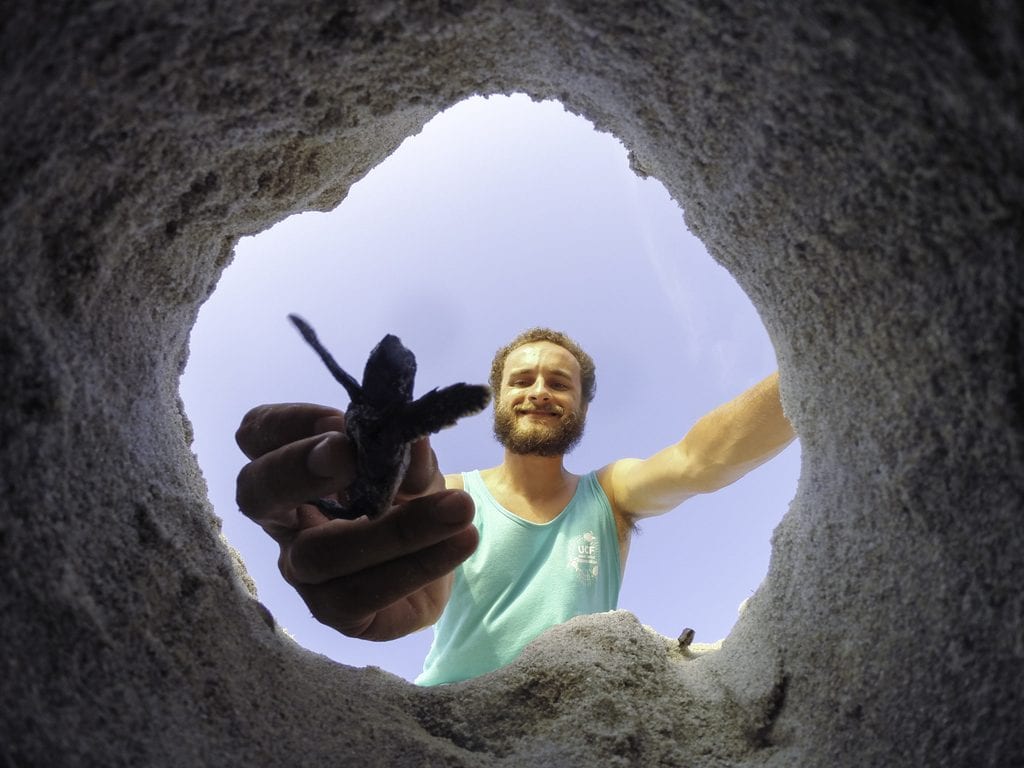Each nesting season thousands of threatened sea turtles lay nests along Central Florida’s coast, particularly on the shores of the Archie Carr National Wildlife Refuge, one of the most important nesting grounds for loggerhead and green sea turtles in the Western Hemisphere.
“We were lucky we are at the end of the nesting season,” said biology professor Kate Mansfield, Ph.D., director of UCF’s Marine Turtle Research Group that has been monitoring the refuge and nearby beaches for the past 30 years. “Otherwise, the losses would have been much greater this season.”
The nesting season, which begins in March, traditionally concludes Oct. 31. Most nesting occurs between May and August, but peak nesting times vary by species.
With a field station in Melbourne Beach that serves as the group’s base of operations, the UCF Marine Turtle Research Group surveys the sea turtle nesting beaches from Patrick Air Force Base south through the Brevard County portion of the wildlife refuge. The group’s facility in Melbourne Beach sustained minimal damage during the storm. UCF researchers and students surveyed about 24 miles of the beach beginning Sunday after the storm to assess the storm’s impact on the nests.
About 150 loggerhead and 525 green turtle nests were estimated lost just within the Brevard County portion of the refuge. Nests were either missing or damaged by the strong surf.
The team also documented dune erosion and some damage to many of the crossover stairs and structures.
“We will continue to monitor remaining marked nests and survey the beaches for any late-season green turtle nesting,” said Erin Seney, Ph.D.,
an assistant research scientist with the group. “And we’re working with local agencies to make sure to mark new nests laid before the end of the season so they are not harmed once restoration efforts begin on the coastline.”
Despite the damage, it has been a good season for sea turtle nesting on the Carr Refuge.
Loggerhead nests totaled 17,192 in the Brevard County portion of the refuge, the second highest total recorded by UCF since monitoring began in 1982. Leatherback sea turtles hit a new local record of 55 nests.
Green turtle nests through September were only at 1,454, compared to last year’s total of 12,905, but that’s not a cause for concern, Seney said. Green turtles have followed a high-low alternating pattern in recent years, and nest numbers should climb next year. Had the storm hit during a high green turtle nesting year, the nest loss could have been much worse. All things considered, the turtle population was very lucky, said Mansfield.

 As many as 200 loggerhead sea turtle nests and 550 green turtle nests were estimated to have been lost in central and southern Brevard County because of Hurricane Matthew.
As many as 200 loggerhead sea turtle nests and 550 green turtle nests were estimated to have been lost in central and southern Brevard County because of Hurricane Matthew.